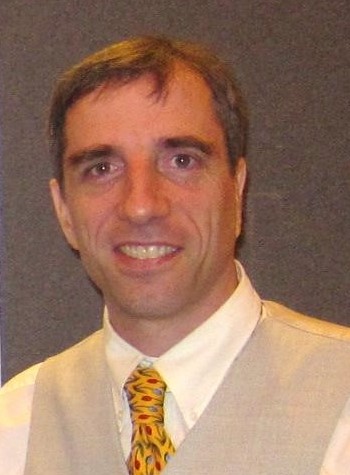Jeroen Anton Van Kan
Postgraduate:
Main Appointment:
Joint Appointments:
Research Fields:
Research Areas:
Research Fields:
- STEMM – Science, Technology, Engineering, Mathematics, Medical Sciences
- Others
Research Keywords:
- Proton Beam Writing
- Nanolithography
- Nanoimprint Lithography
- Proton Microscopy
- Nanofluidics Single DNA Molecule Detection
Current Appointments:
Brief Description of Research:
Current Research
• Micro and Nano fabrication using: Proton Beam Writing (PBW), Nano Imprint Lithograph (NIL) and mold fabrication
• Micro & Nanofluidic lab on chip devices for single molecule detection and particle separation
• Materials modification using ion beams, e.g. Graphene, Magnetic materials and Diamond films.
• Ion source development for next generation ion nano-probes.
Brief Description of Research:
Microscopy has been an integral part of scientific development and has spurred development in many fields. Microscopy using fast protons has several advantages over other forms of microscopy. A fast incoming proton mainly interacts with substrate electrons, due to the mass mismatch between protons and electrons a proton beam practically follows a straight path through material. We can now focus proton beams down to 9.3 x 32 nm2, allowing high aspect ratio lithography down to 19 nm.
We are developing a user friendly ion microscope featuring 1-10 nm spot sizes. This new microscope will enable application like:
• Fast sub 10 nm 3D lithography without “proximity effects”.
• Sub 10 nm whole cell imaging, opening up new pathways to investigate the uptake of nanoparticles in drugs delivery.
• This new system will have accurate control over individual implanted ions, facilitating quantum device fabrication through deterministic ion implantation.
Total Number of Publications:
Five Representative Publications:
1) Considerations for the nano aperture ion source: Geometrical design and electrical control, Jeroen A. van Kan, Rudy Pang, Tanmoy Basua, Yanxin Dou, Gokul, Nicolas Tarino, Jack Tregidga, Sangita Chaki Roy, Huei Ming Tan, Rev. Sci. Instrum. 91, 013310 (2020)
2) Amplified stretch of bottlebrush-coated DNA in nanofluidic channels, C Zhang, A Hernandez-Garcia, K Jiang, Z Gong, D Guttula, SY Ng, PP Malar, JA van Kan, Liang Dai, PS Doyle, R de Vries, and JRC van der Maarel, Nucleic Acids Research, 41 (2013) No 20: e189
3) The second generation Singapore high resolution proton beam writing facility, JA van Kan, P Malar, and Armin Baysic de Vera, Rev. Sci. Instrum. 83 (2012) 02B902
4) High throughput fabrication of disposable nanofluidic lab-on-chip devices for single molecule studies, J.A. van Kan, C. Zhang, P. Malar and J.R.C. van der Maarel, Biomicrofluidics 6 (2012) 036502.
5) Proton Beam Writing of Three-Dimensional Nanostructures in Hydrogen Silsesquioxane, JA van Kan, AA Bettiol, and F Watt, Nano Letters, 6 (2006) 579
My Research Videos:
Top 5 Publications:
- Lorem ipsum dolor sit amet
- Lorem ipsum dolor sit amet
- Lorem ipsum dolor sit amet
- Lorem ipsum dolor sit amet
- Lorem ipsum dolor sit amet
Journals Published:
- Lorem ipsum dolor sit amet
- Lorem ipsum dolor sit amet
- Lorem ipsum dolor sit amet
- Lorem ipsum dolor sit amet
- Lorem ipsum dolor sit amet

Appointments
Education
Research Areas
- Proton Beam Writing
- Nanolithography
- Nanoimprint Lithography
- Proton Microscopy
- Nanofluidics Single DNA Molecule Detection
Research Description
Current Research
• Micro and Nano fabrication using: Proton Beam Writing (PBW), Nano Imprint Lithograph (NIL) and mold fabrication
• Micro & Nanofluidic lab on chip devices for single molecule detection and particle separation
• Materials modification using ion beams, e.g. Graphene, Magnetic materials and Diamond films.
• Ion source development for next generation ion nano-probes.
Brief Description of Research:
Microscopy has been an integral part of scientific development and has spurred development in many fields. Microscopy using fast protons has several advantages over other forms of microscopy. A fast incoming proton mainly interacts with substrate electrons, due to the mass mismatch between protons and electrons a proton beam practically follows a straight path through material. We can now focus proton beams down to 9.3 x 32 nm2, allowing high aspect ratio lithography down to 19 nm.
We are developing a user friendly ion microscope featuring 1-10 nm spot sizes. This new microscope will enable application like:
• Fast sub 10 nm 3D lithography without “proximity effects”.
• Sub 10 nm whole cell imaging, opening up new pathways to investigate the uptake of nanoparticles in drugs delivery.
• This new system will have accurate control over individual implanted ions, facilitating quantum device fabrication through deterministic ion implantation.
Research Videos
Selected Publications
1) Considerations for the nano aperture ion source: Geometrical design and electrical control, Jeroen A. van Kan, Rudy Pang, Tanmoy Basua, Yanxin Dou, Gokul, Nicolas Tarino, Jack Tregidga, Sangita Chaki Roy, Huei Ming Tan, Rev. Sci. Instrum. 91, 013310 (2020)
2) Amplified stretch of bottlebrush-coated DNA in nanofluidic channels, C Zhang, A Hernandez-Garcia, K Jiang, Z Gong, D Guttula, SY Ng, PP Malar, JA van Kan, Liang Dai, PS Doyle, R de Vries, and JRC van der Maarel, Nucleic Acids Research, 41 (2013) No 20: e189
3) The second generation Singapore high resolution proton beam writing facility, JA van Kan, P Malar, and Armin Baysic de Vera, Rev. Sci. Instrum. 83 (2012) 02B902
4) High throughput fabrication of disposable nanofluidic lab-on-chip devices for single molecule studies, J.A. van Kan, C. Zhang, P. Malar and J.R.C. van der Maarel, Biomicrofluidics 6 (2012) 036502.
5) Proton Beam Writing of Three-Dimensional Nanostructures in Hydrogen Silsesquioxane, JA van Kan, AA Bettiol, and F Watt, Nano Letters, 6 (2006) 579
